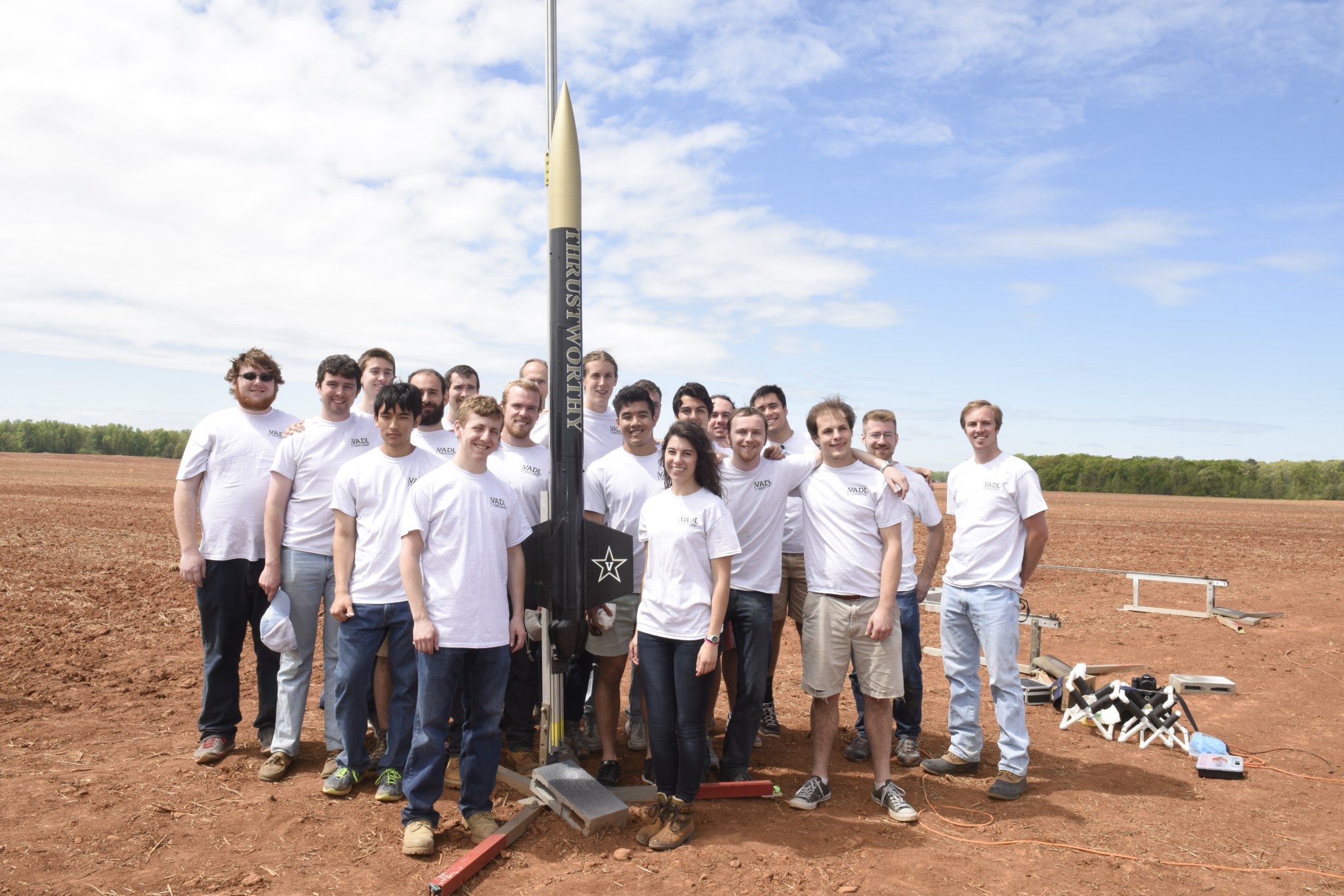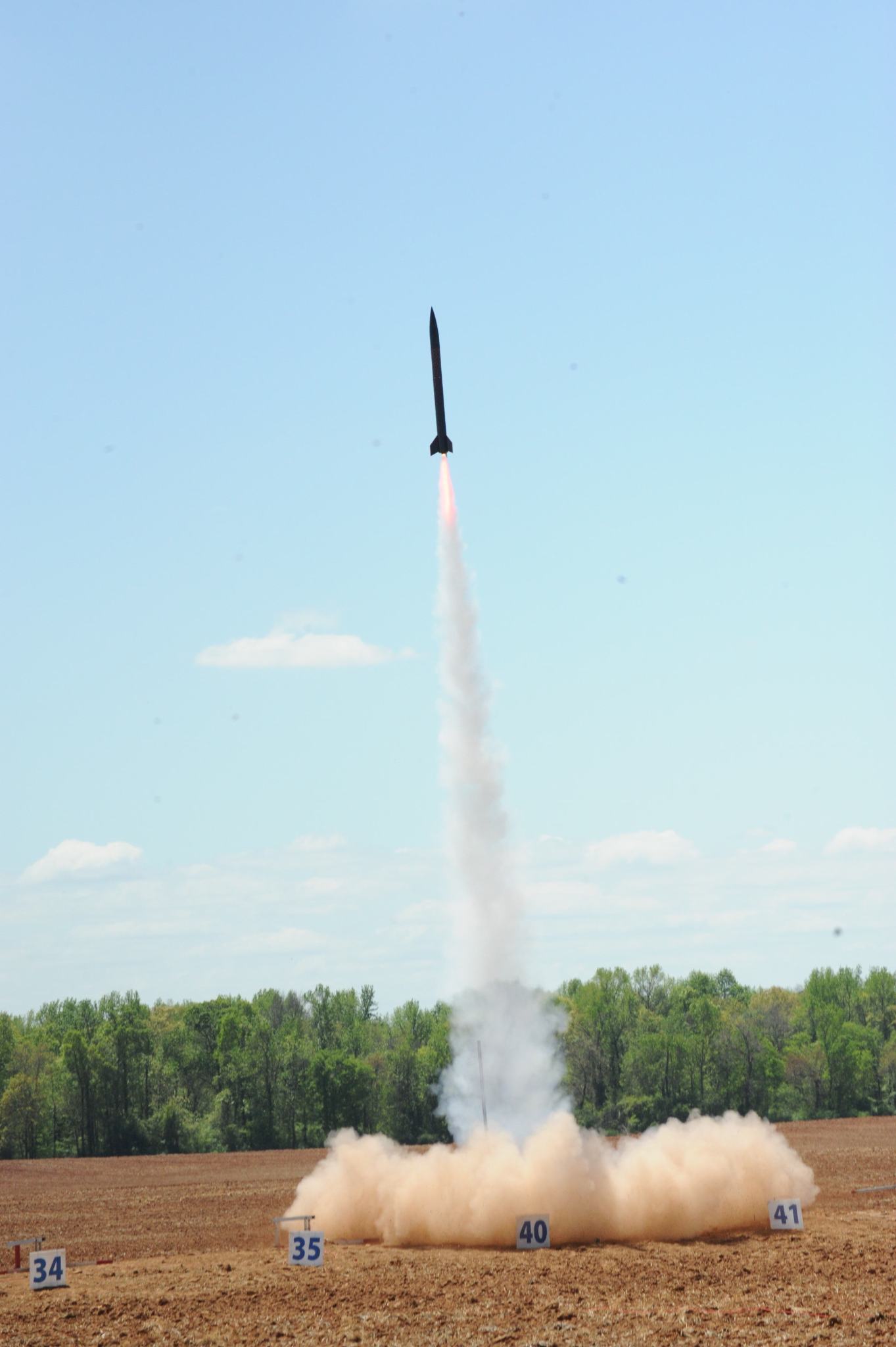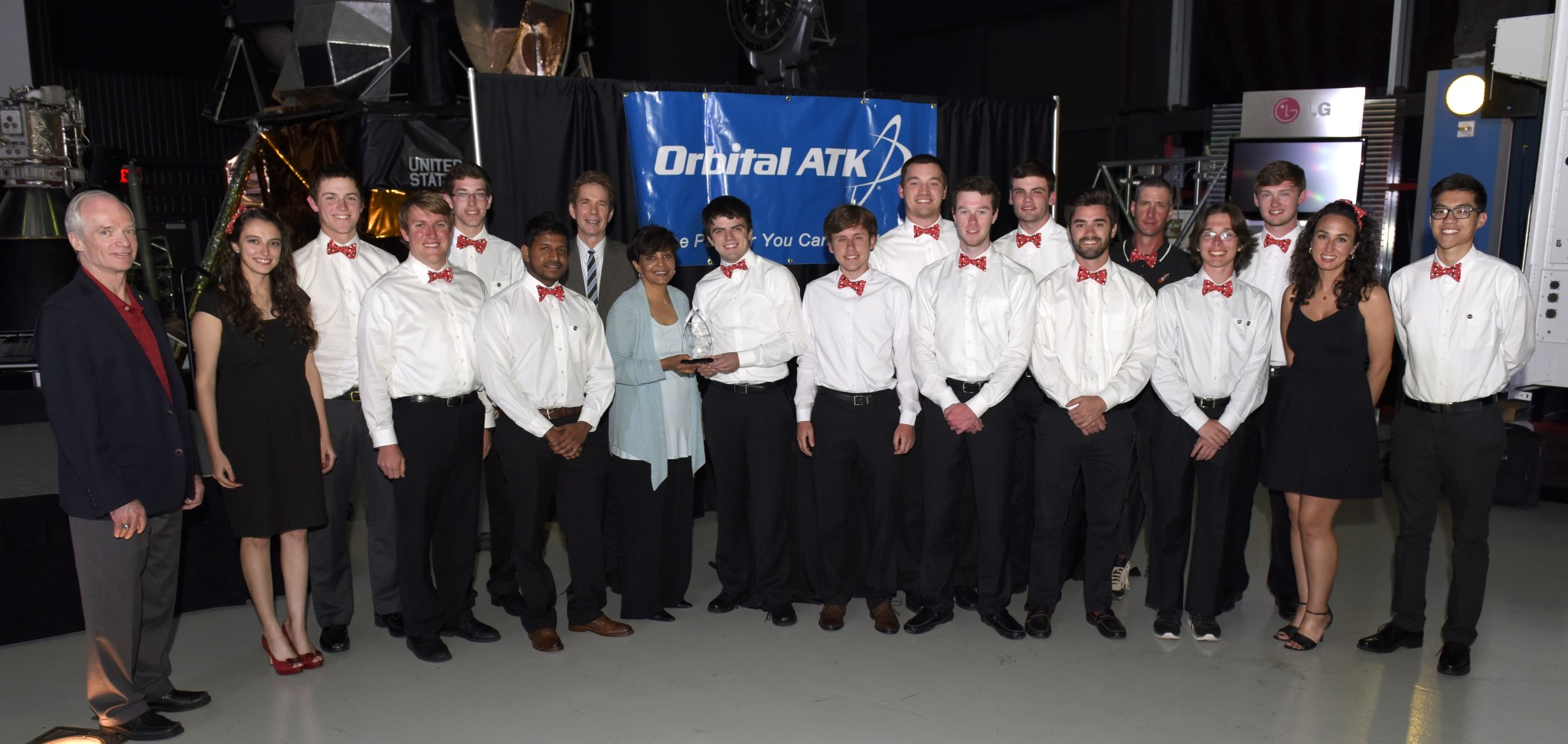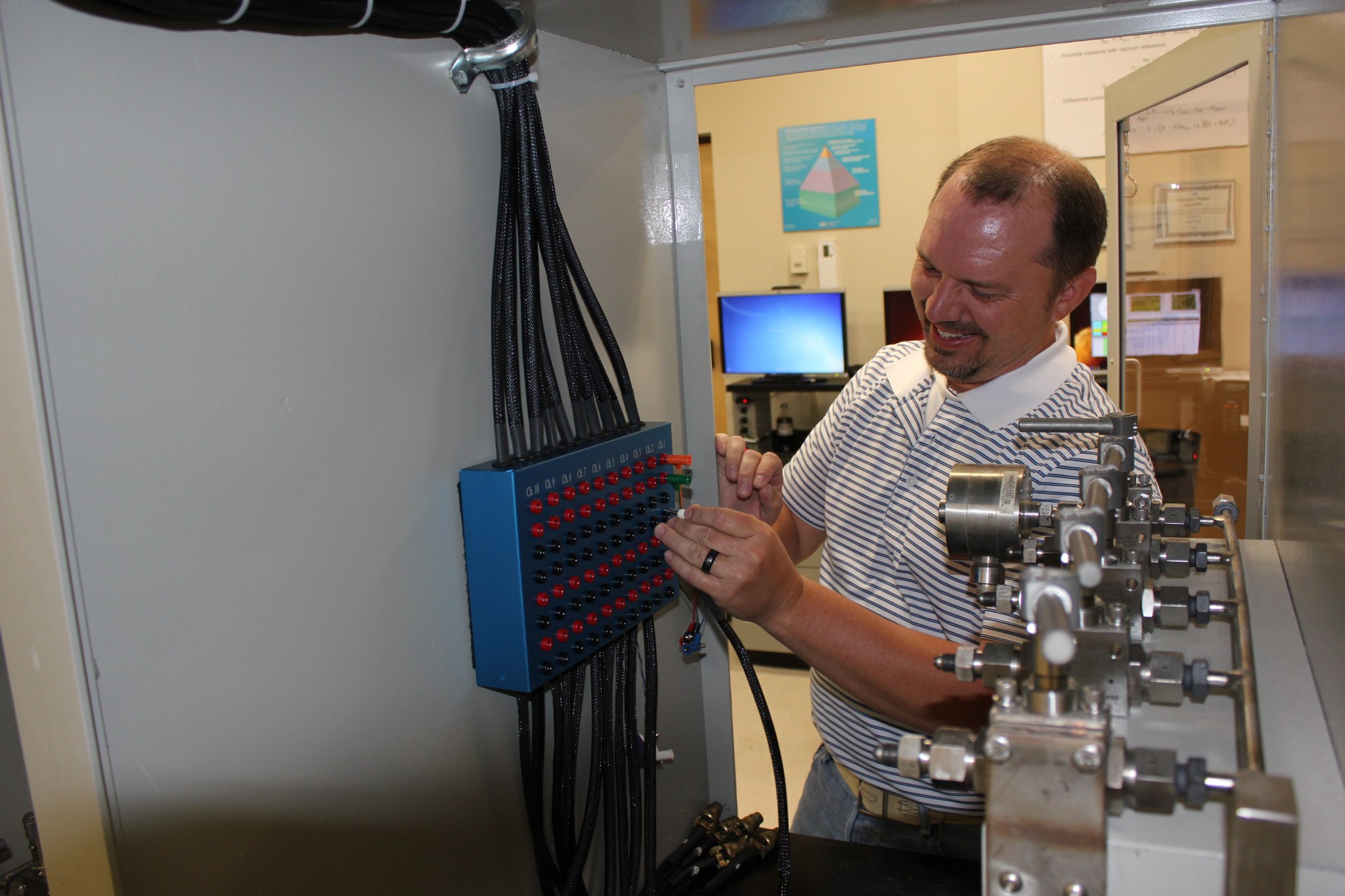In This Week’s Star
- Around the World 100,000 Times: Space Station Completes Milestone Orbit
- Hinode Captures Amazing Video of Mercury Transit
- NASA Announces Winners of 2016 Student Launch
- Marshall Team Members Invited to Celebrate World Metrology Day
- Marshall’s Katherine Griffith Recognized for Asian American Pacific Islander Month
- This Week in NASA History: Apollo 10 Launches — May 18, 1969
- Obituaries
Around the World 100,000 Times: Space Station Completes Milestone Orbit
By Bill Hubscher
The International Space Station completed its 100,000th orbit of Earth on May 16.
The space station is a unique place — a convergence of science, technology and human innovation that demonstrates new technologies and makes research breakthroughs not possible on Earth. The microgravity laboratory has been the home away from home for an international crew around the clock for more than 15 years. These crew members have conducted thousands of hours of science while traveling at a speed of 5 miles per second — 17,500 miles per hour — and orbiting Earth every 90 minutes. That adds up to traveling more than 2.6 billion miles — 10 round trips between Earth and Mars.
The Zarya control module, launched from Russia in November 1998, was the first piece of the space station placed in orbit. It wasn’t until a few years later as more sections were added that humans began around-the-clock habitation.
In March 2001, flight controllers at the Payload Operations Integration Center at NASA’s Marshall Space Flight Center began their own streak, staffing consoles in the science mission control for the space station to manage the massive amounts of science conducted on board. Personnel in the POIC have coordinated more than 1,700 science payload activities with NASA’s international partners and manage daily communications between station crew members and researchers around the world with experiments on board.
“The pace of our operations seems to increase as each orbit goes by,” said Rick Rodriguez, a payload operations manager for Expeditions 47 and 48, guiding the ground-based science support team from the POIC at Marshall. “As we plan for more cargo vehicles and U.S. crew vehicles in the future it’s going to get even busier. It’s a great time to be doing science operations on station.”
There have been 222 different people who have worked and lived aboard the space station — some for only a few weeks, and two crew members for a year in space.
Among the current crew of six is NASA astronaut Jeff Williams, who is in the middle of this third visit to the space station. When he returns to Earth in September, he will set a new American record for the most time spent in space. He recently marked the 100,000th orbit with a video tribute.
The space station remains the springboard to NASA’s next great leap in exploration, enabling research and technology developments that will benefit human and robotic exploration of destinations beyond low-Earth orbit, including asteroids and Mars. It is the blueprint for global cooperation — one that enables a multinational partnership and advances shared goals in space exploration.
These space travelers have taken thousands of photographs of Earth as they have orbited the planet. As that orbit shifts, the station is very easy to see from the ground, if you know when and where to look. You can spot the space station as it flies overhead by signing up to receive alerts when the station will be in view.
Hubscher, an ASRC Federal/Analytical Services employee, supports the Office of Strategic Analysis & Communications.
Hinode Captures Amazing Video of Mercury Transit
Using its X-ray telescope, Hinode captures light from the sun’s coronal material at millions of degrees. On May 9, Hinode tracked Mercury on its transit across the sun using this telescope. The apparent wobble of Mercury’s path in front of the sun is an optical effect, called parallax, caused by Hinode’s changing perspective as it orbits Earth. Although Mercury orbits the sun every 88 days, Earth, the sun and Mercury rarely align. And because Mercury orbits in a plane tilted from Earth’s orbit, it usually moves above or below our line of sight to the sun. But about 13 times a century, Mercury passes between Earth and the sun in a rare astronomical event — a planetary transit. This was the first Mercury transit since 2006. Using the vantage point of space, NASA works to gain a deep scientific understanding of our planet, other planets and solar system bodies, the interplanetary environment, the Sun and its effects on the solar system and the universe beyond to lay the intellectual foundation for the robotic and human expeditions of the future. (JAXA/NASA/Smithsonian Astrophysical Observatory/Montana State University)
NASA Announces Winners of 2016 Student Launch
By Christopher Blair
Some familiar faces were all smiles when NASA announced the winners of the 2016 NASA Student Launch challenge, held April 13-16 near NASA’s Marshall Space Flight Center.
Taking home the top prize, for an impressive fourth year in a row, was Vanderbilt University in Nashville, Tennessee. Having finished in third place during back-to-back years in 2011 and 2012, the Commodores have built themselves into a dynasty with this current four-peat victory. And, as always, due the winners, are the spoils. Vanderbilt received the top cash prize of $5,000, awarded by Orbital ATK of Promontory, Utah, longtime corporate sponsor of Student Launch.
Not to be outdone in consistency was the team from the University of Louisville, in Kentucky, winning second place for a consecutive year. The aptly named River City Rocketry team continued its yearly streak of top appearances, having finished second- or third-place every year since 2013, as well as having won the Rookie of the Year award in 2012.
Rounding out the top three was the team from Cornell University in Ithaca, New York. The Rookie of the Year award was presented to the AstroCats of the University of Cincinnati in Ohio.
Nearly 50 middle and high school, college and university teams from 22 states demonstrated advanced aerospace and engineering skills related to real-world activities and programs on NASA’s journey to Mars. Teams spent eight months building and testing rockets designed to fly to an altitude of one mile, deploy an automated parachute system and land safe enough for reuse, while some teams also designed scientific payloads for data collection during flight.
“This is our nation’s future workforce, applying engineering skills and research techniques learned in class toward real-world applications,” said Tammy Rowan, manager of Marshall’s Academic Affairs Office. “Developing these sophisticated components will help them enter the aerospace industry experienced and ready to contribute to space exploration.”
Other preliminary awards for achievements such as best vehicle design, safety, best team website and others were announced during an April 16 ceremony at the U.S. Space & Rocket Center, hosted by Orbital ATK.
The Academic Affairs Office at Marshall manages Student Launch, to further NASA’s education goal of attracting and encouraging students to pursue degrees and careers in the STEM fields of science, technology, engineering and mathematics. NASA’s Office of Education and Human Exploration and Operations Mission Directorate, as well as Orbital ATK’s Propulsion Systems Division, provide funding and leadership.
For more details about Student Launch, the latest images and links to social media accounts, click here.
Archived launch-day footage is available on Marshall’s Ustream account.
Blair, an ASRC Federal/Analytical Services employee, supports the Office of Strategic Analysis & Communications.
Marshall Team Members Invited to Celebrate World Metrology Day
By Ryan Connelly
In celebration of World Metrology Day, NASA Marshall Space Flight Center’s Metrology and Calibration Laboratory will hold an open house May 20 from 8-10 a.m. The historic laboratory is located on Dodd Road off Martin Road, next to the Payload Operations Integration Center, in Building 4650.
Marshall team members are invited to tour the laboratory and talk to specialists in the field of metrology — the scientific study of measurement.
Measurements are used every day to advance an understanding of the cosmic processes, develop new materials, engineer new technologies, build one-of-a-kind spacecraft and much more to help complete agency missions while focusing on quality and safety.
Metrology provides the framework for consistent worldwide measurements, from the simplest to the most complex to design, build and preserve. World Metrology Day celebrates and acknowledges the numerous contributions from individuals who apply measurements in their daily work, in order to achieve all that incorporates our world.
The theme for this year’s World Metrology Day is “Measurements in a Dynamic World,” which was selected to support the rapid pace of change in measurements science, and how it relates to the world around us. Nothing is more dynamic and challenging than the undertaking of exploring and understanding our universe, and metrology plays a fundamental role in scientific discovery, innovation, improving quality of life and protecting the global environment.
The Metrology and Calibration Laboratory provides calibration and metrology services to all Marshall organizations, programs and projects. Measurement and test equipment – many one-of-a-kind — will be on display during the open house.
Continental breakfast will be provided from 8-10 a.m. For more information, visit the World Metrology Day event page on Explornet, or call 267-544-4900.
Connelly, a NASA intern, is supporting the Office of Strategic Analysis & Communications.
Marshall’s Katherine Griffith Recognized for Asian American Pacific Islander Month
Katherine Griffith, an accountant in the Office of the Chief Financial Officer at NASA’s Marshall Space Flight Center, is profiled in celebration of Asian American Pacific Islander Month. After immigrating to the United States at 16, Griffith graduated high school, joined the U.S. Air Force and earned a bachelor’s degree in accounting before joining Marshall two years ago. Each May NASA celebrates the contributions of Asian American Pacific Islanders, by recognizing the achievements of team members from this rich and diverse background. Congress officially designated May as Asian American Pacific Islander Month in 1992 to celebrate the cultures of Asia and many Pacific islands including the Philippines and Hawaii. (NASA/MSFC)
This Week in NASA History: Apollo 10 Launches — May 18, 1969
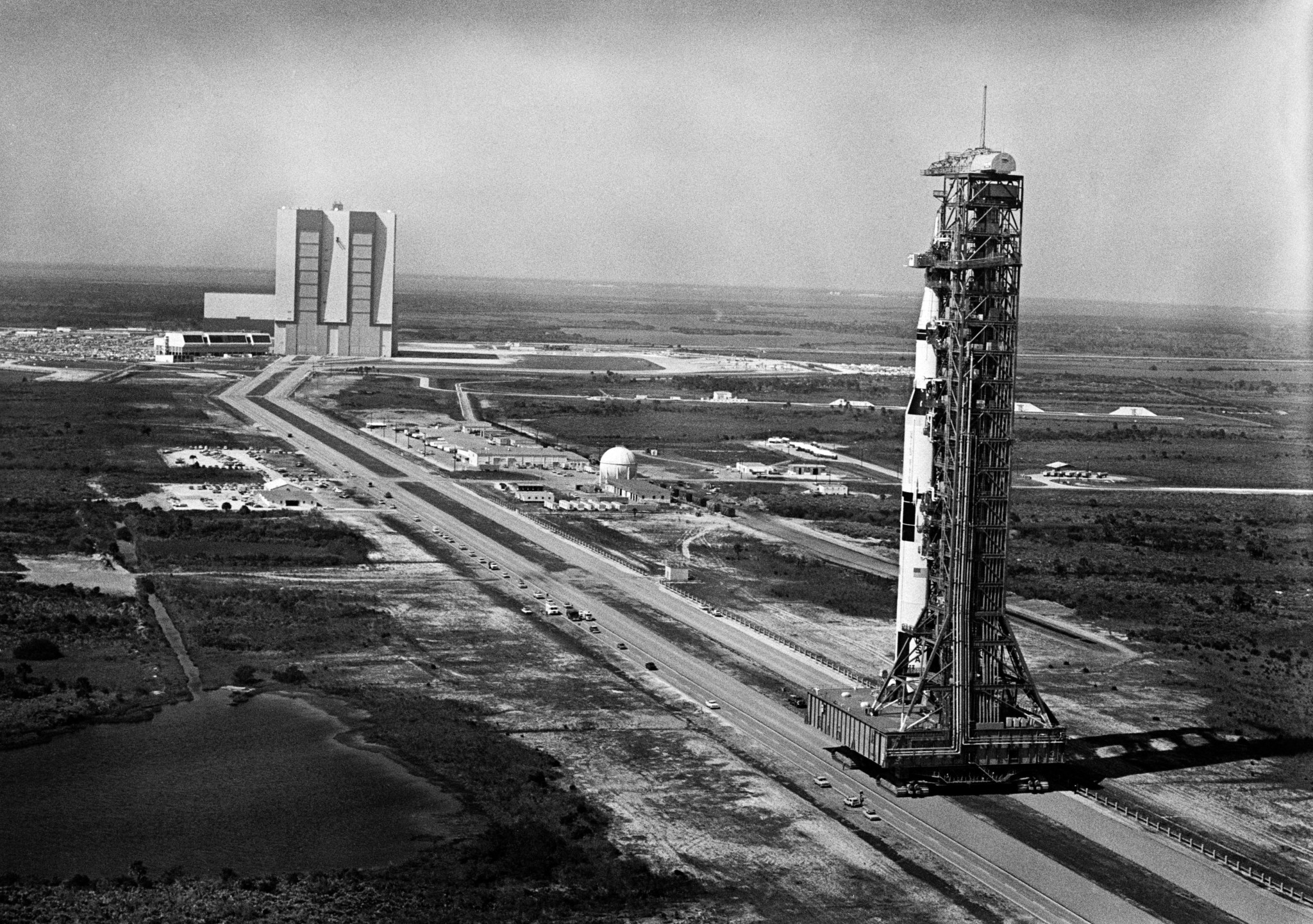
This week in 1969, Apollo 10 launched from NASA’s Kennedy Space Center. The mission encompassed all aspects of an actual crewed lunar landing, except the landing. It was the first flight of a complete, crewed Apollo spacecraft to operate in lunar orbit. This aerial view at Kennedy’s Launch Complex 39 shows the 363-foot-tall Saturn V launch vehicle — which was designed, developed and built at NASA’s Marshall Space Flight Center — on its way to Pad B. The NASA History Program documents and preserves NASA’s remarkable history through a variety of products — photos, press kits, press releases, mission transcripts and administrators’ speeches. For more pictures like this one and to connect to NASA’s history, visit the History Program’s Web page. (NASA)
Obituaries
James R. Holmes, 90, of Huntsville, died May 10. He retired from the Marshall Center in 1980 as an aerospace engineer. He is survived by his wife, Peggy R. Holmes.
Ralph H. Keel, 95, of Huntsville, died April 12. He retired from the Marshall Center in 1977 as an industrial specialist.
Jean M. Drake, 85, of Huntsville, died May 13. She retired from the Marshall Center in 1984 as a worker’s compensation assistant.
Victor R. Neiland, 91, of Huntsville, died May 15. He retired from the Marshall Center in 1988 as an aerospace engineer. He is survived by his wife, Mary E. Neiland.





























